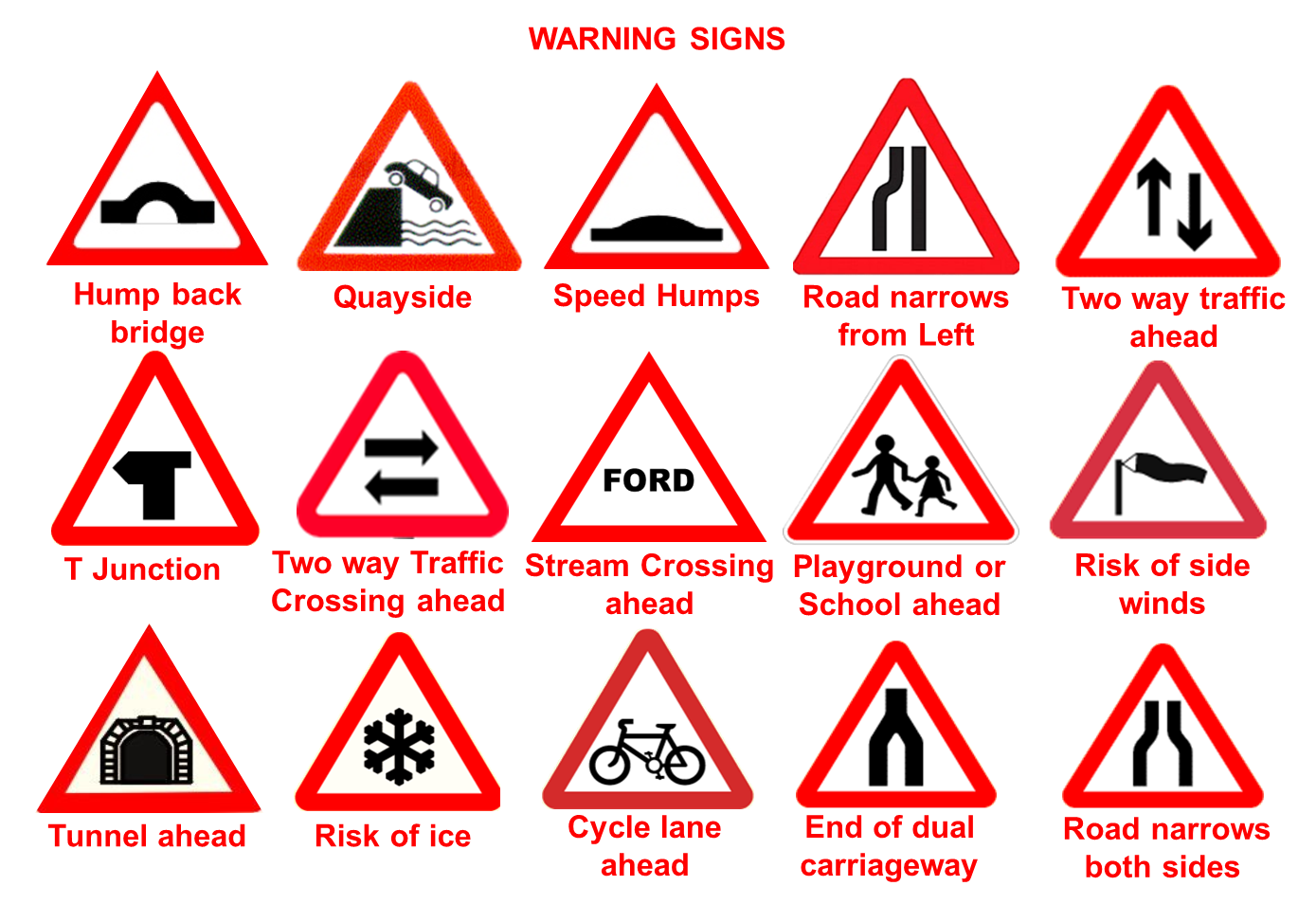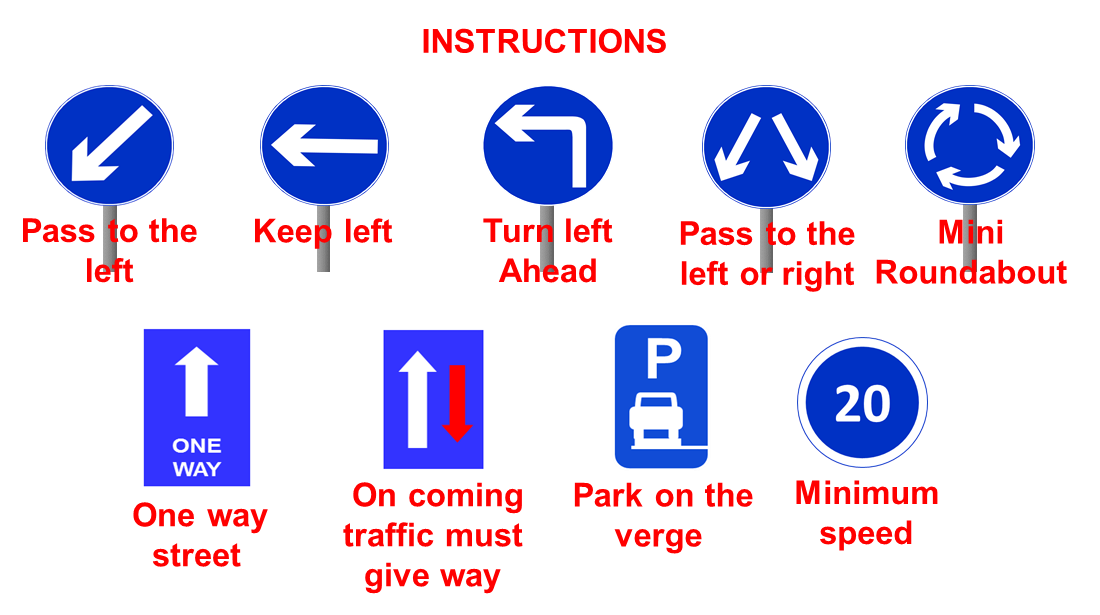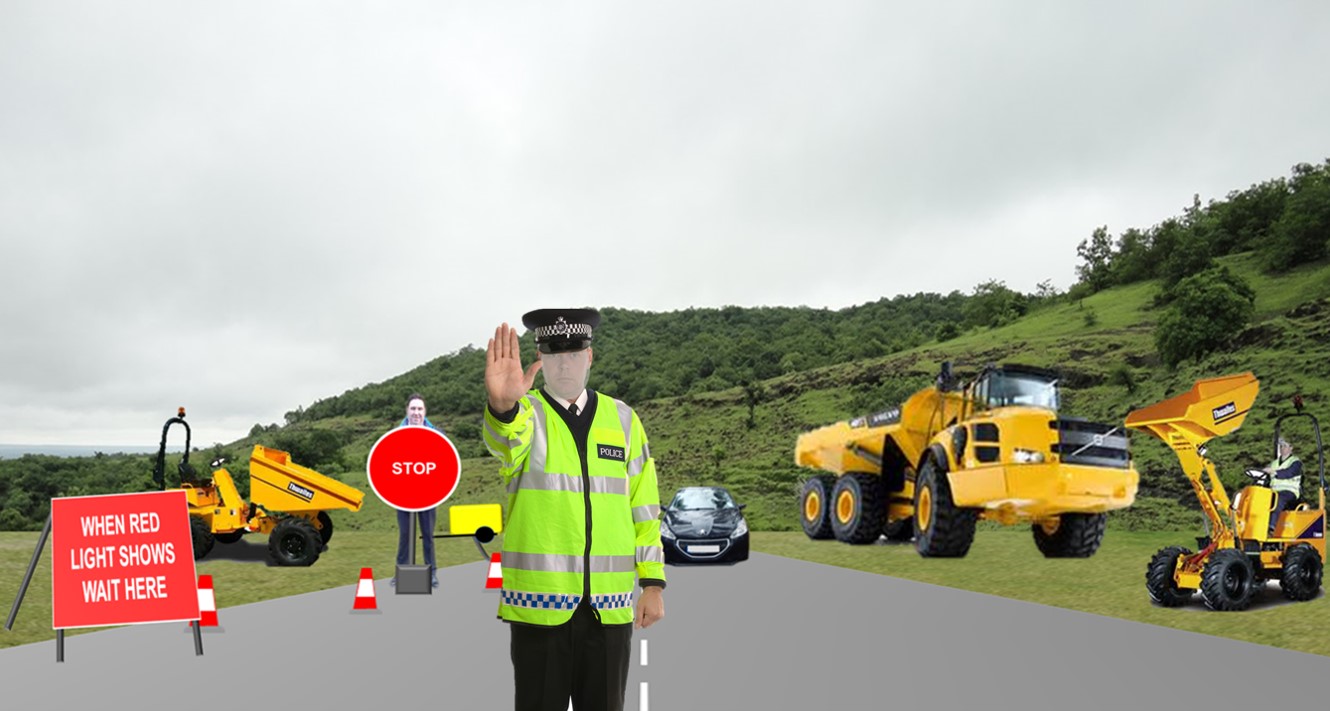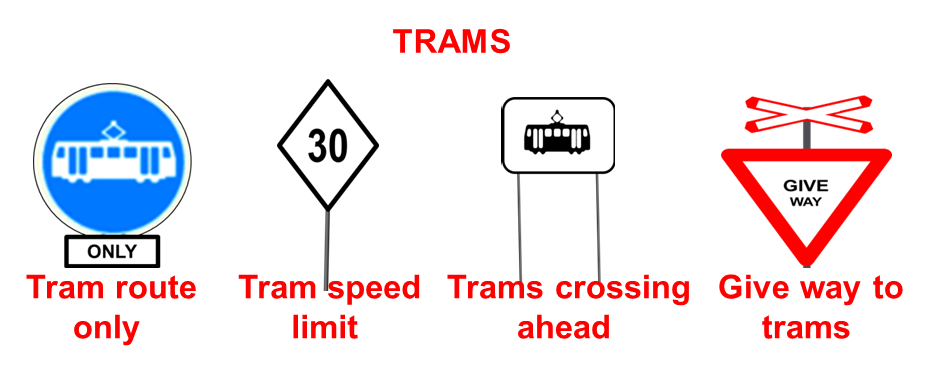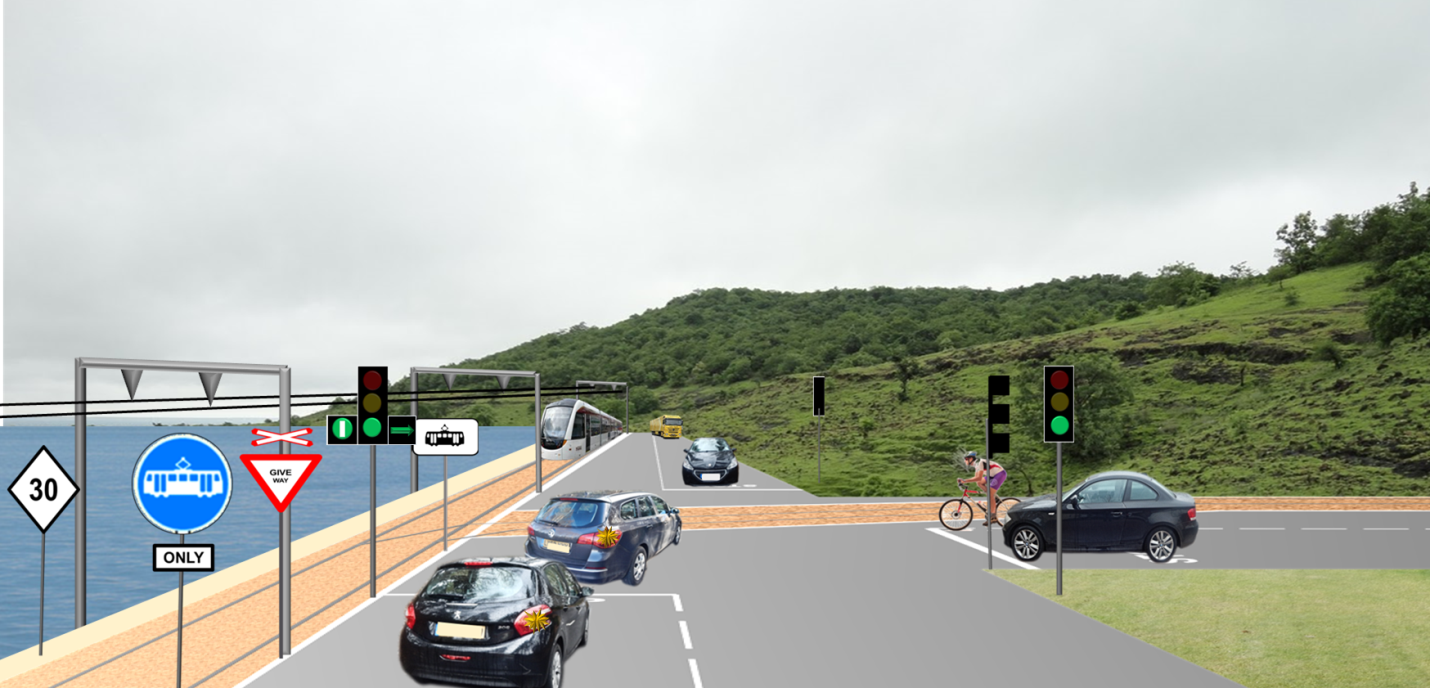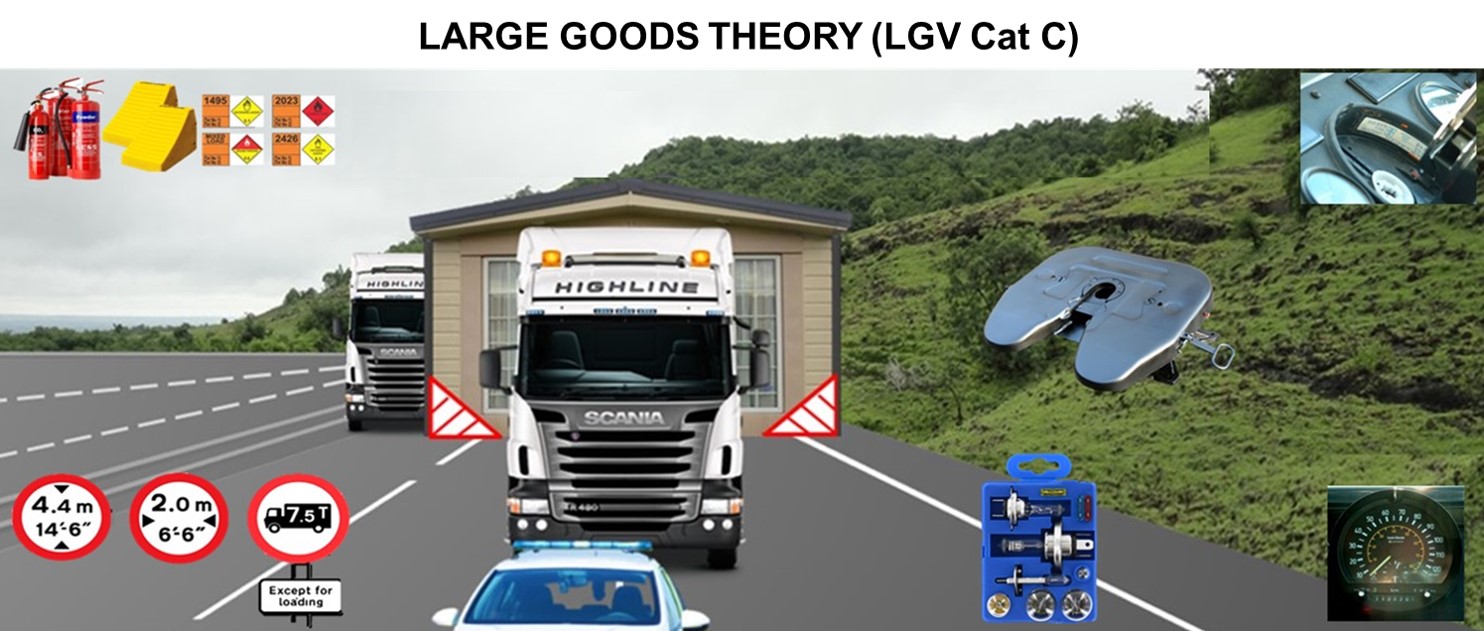TRAFFIC SIGNS LGV
Understanding traffic signs and reacting to them is one of the most important aspects of driving no matter what category of vehicle you are driving. Signs are designed to make driving safe for all. There are several types, Mandatory, Warning, Instructional and Information. Throughout this training programme we have tried to display signs where you would normally come across them to help you have a full understanding of their relevance. Below are just a few of the signs that you will need to know.
ORDER SIGNS are mandatory, as shown in the picture, they are circle in shape with a red border. They could have a white or blue background. The information displayed is the order that must be obeyed.
WARNING SIGNS are triangular with a red border. They will always have a white background and will display information that is relevant to upcoming situations. The GIVE WAY sign is also a warning sign and can be found at junctions with an unrestricted view. It means you may not have to stop if it’s safe, but you do have to give way to traffic on the main carriageway. As you can see this warning sign is inverted and clearly distinguishes it from other warning signs.
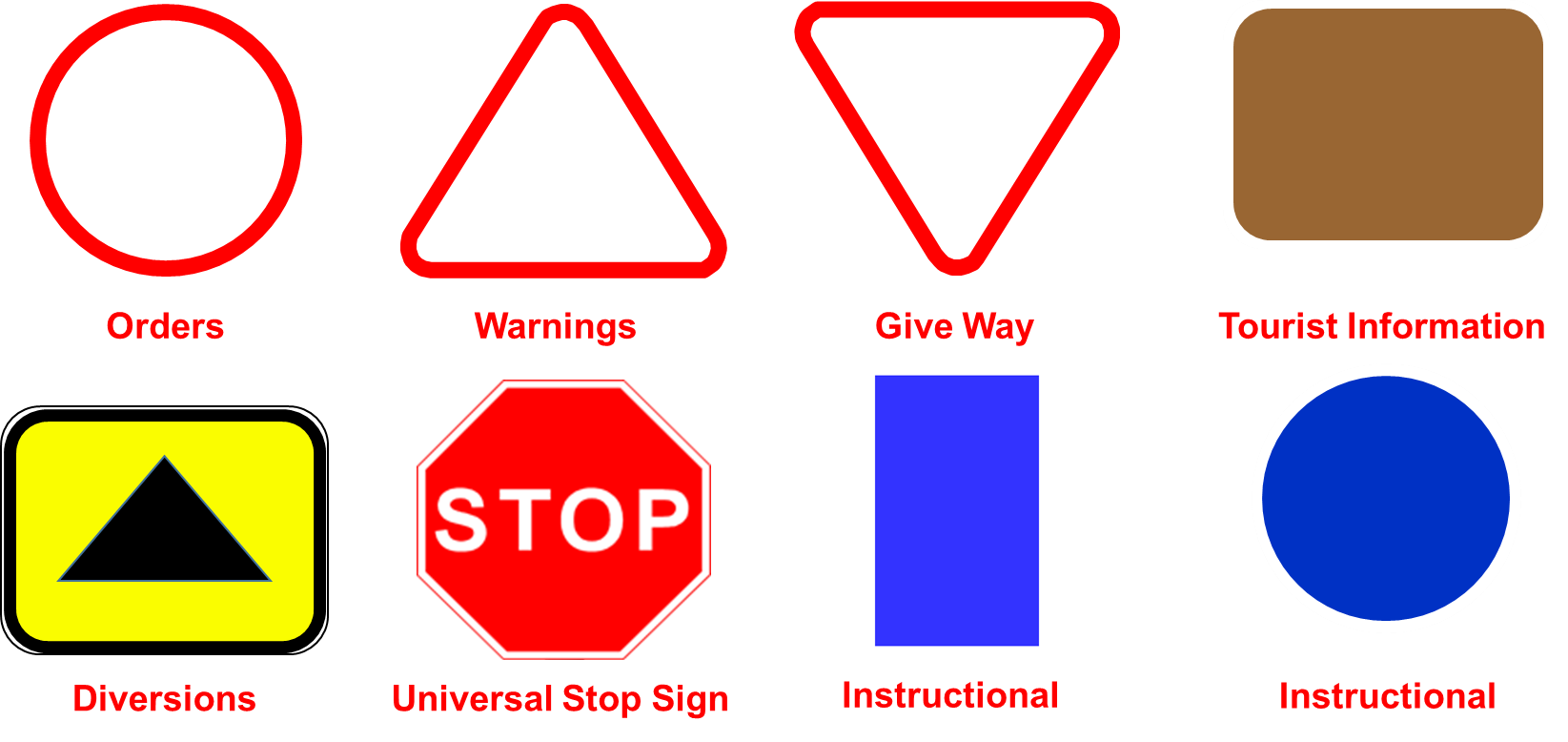
TOURIST INFORMATION signs are rectangle with a brown background. They will display all the relevant information to guide you to the attraction that you are seeking. They may not take you the most direct route but it will take you via the least congested.
DIVERSION SIGNS give you as a motorist a choice. They have a yellow background and will display several different black shapes in their centre. The picture shows a black triangle, this can be found near high bridges, viaducts or anywhere that the weather can affect a vehicle such as a large high sided truck or caravan. It is called an emergency diversion. If you follow the sign you will re-join your intended route avoiding the hazard. The different shapes are for different destinations but will achieve the same results.

The STOP SIGN means what it says. It is hexagonal with a red back ground and is often accompanied with a solid white line painted on the road surface with the word STOP. Even if the road surface or sign was covered in snow, you as a motorist would be able to identify the distinctive shape and know that you must stop.
INSTRUCTIONAL SIGNS are simple to understand, they have a blue background and will display information. They will show instructions in shape and number form.
MANDATORY SIGNS
Speed limits must always be obeyed. Failure to comply with the speed limit can result in a fixed penalty fine and points. If you have had your licence less than two years and you accumulate six points or more you must retake your theory and practical tests. Variable speed limits can be found on smart motorways and tidal flow systems. You must not exceed the limits displayed.
They are monitored and again you will be breaking the law. Variable speed limits are designed to keep traffic flowing smoothly. The national speed limit is different for each class of road, single, dual carriageway and motorway’s. A word of warning, a lot of drivers believe that they will not be prosecuted if they only exceed a speed limit by 10%, this is a miff as my wife can testify. Most accidents are caused by excessive speed.
As you can see by the signs on the above, orders are quite clear. No means No. One of the most interesting signs is the No U turn. It has always been a manoeuvre that the DVSA have tried to avoid as they advise you to find a safe place to turn your vehicle around. Some of the new questions are based on how to complete a U turn safely. But all signs are self-explanative, what you see is what must be obeyed.
Just a couple more signs for your perusal, they too have different coloured backgrounds but still have the same distinctive shape and border. Lollipop officers like to brandish these, and they do carry the full weight of the law.
If you fail to stop, they will record your registration on the little black line via a stealth like lump of chalk. Once they have finished their duties they will report you.

No Entry means exactly what is says, NO ENTRY.
The parking signs shown on the left are orders irrespective of the background colour. The first sign is for a Clearway. You cannot stop unless it is an emergency.
This sign is clearly marked with an X.
The second sign only shows a single red line. This sign means no waiting, but you can stop briefly to drop off and pick up passengers and is classed as an urban clearway. If there are times shown below the sign then the no waiting rule only applies during the times shown. Outside of these times the restrictions do not apply.
The third sign tells you that the parking restrictions have ended. Some motorists do get confused with this sign and believe it is the end of the national speed limit. Remember a speed limit is ended by another speed limit.
WARNING SIGNS
Below is a selection of warning signs that you will encounter on your daily exploits as a motorist. They play a crucial part in making our roads safe. They will warn you if necessary of impending danger allowing you to react in good time.
Throughout this training package we have tried to place the appropriate signs with the situations where you would normally find them, explaining each one. Below is a typical picture which shows the end of a dual carriageway. All the signs associated with this situation are on display.
INSTRUCTIONAL SIGNS
In addition to the signs already covered you will see instructional signs.
They give you as a driver further instructions on how to negotiate situations that you would find yourselves in.
Always take the appropriate action.
TEMPORARY SIGNS
You will find temporary signs at road works, all signs are mandatory.
In certain situations the traffic can be controlled by a police officer, stop means stop.
TRAMS
Cars, motorcycles and trucks are not the only form of transport that use the highways. In cities, public transport has been encouraged and you may encounter trams. There will be different signs displayed to help you and the tram drivers negotiate the roads safely.



